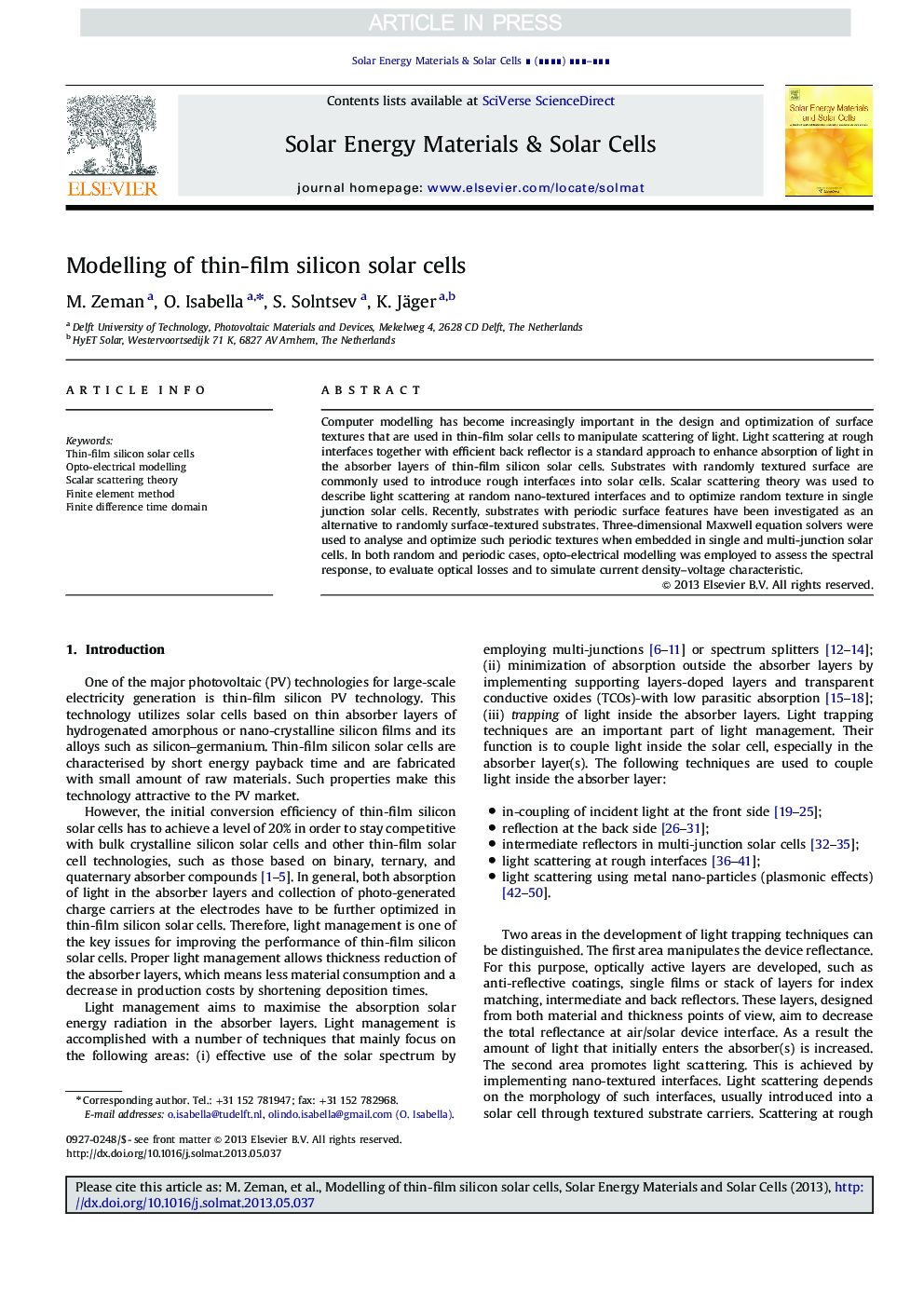| Article ID | Journal | Published Year | Pages | File Type |
|---|---|---|---|---|
| 6535936 | Solar Energy Materials and Solar Cells | 2013 | 18 Pages |
Abstract
Computer modelling has become increasingly important in the design and optimization of surface textures that are used in thin-film solar cells to manipulate scattering of light. Light scattering at rough interfaces together with efficient back reflector is a standard approach to enhance absorption of light in the absorber layers of thin-film silicon solar cells. Substrates with randomly textured surface are commonly used to introduce rough interfaces into solar cells. Scalar scattering theory was used to describe light scattering at random nano-textured interfaces and to optimize random texture in single junction solar cells. Recently, substrates with periodic surface features have been investigated as an alternative to randomly surface-textured substrates. Three-dimensional Maxwell equation solvers were used to analyse and optimize such periodic textures when embedded in single and multi-junction solar cells. In both random and periodic cases, opto-electrical modelling was employed to assess the spectral response, to evaluate optical losses and to simulate current density-voltage characteristic.
Related Topics
Physical Sciences and Engineering
Chemical Engineering
Catalysis
Authors
M. Zeman, O. Isabella, S. Solntsev, K. Jäger,
